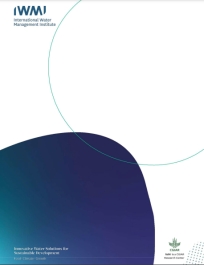When considering water management, formal institutions tend to overshadow the local informal ones although the latter guide day-to-day interactions on water use. Conversely, Integrated Water Resources Management (IWRM) has demonstrated a bias toward the formal state-based institutions for water management. A study was carried out to examine how local water rights and local informal institutional arrangements influence water management in the Great Ruaha River catchment in the Rufiji basin in Tanzania. Participatory appraisals were carried out, supplemented by focus group discussions, interviews, and a stakeholders workshop. It was found that local water rights, local water rotations and local water user groups are widely in use and are more influential than the formal water rights, water fees and water user associations (WUAs). Water allocation at the driest period depends on local informal relations among irrigators. More than 70% of water users surveyed choose to settle disputes over water via informal channels and the latter are more effective in resolving water conflicts and reconciling the antagonists compared to the formal routes. It was also found that although much emphasis and many resources have been expended in transforming local water rights and water related organisations to formal registered ones, the former have remained popular and water users feel more affiliated to local arrangements. The paper concludes that local informal water management can offer the best lessons for the formal management arrangements and should not be simply overlooked. Finally, the paper recommends that the formal and informal institutions should be amalgamated to bring forth a real Integrated Water Resource Management framework.
Water rights / Institutions / Water resource management
Record No:H042980




